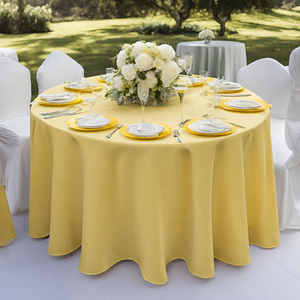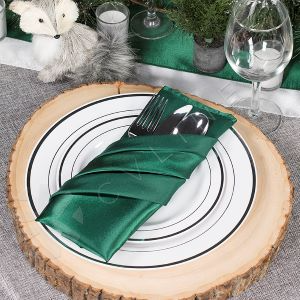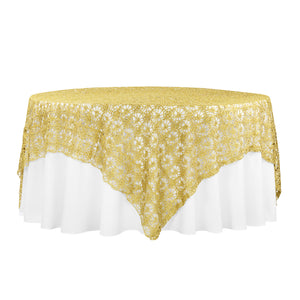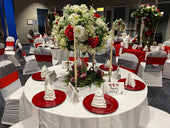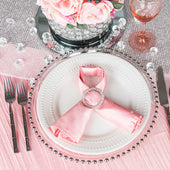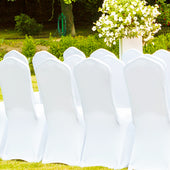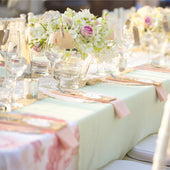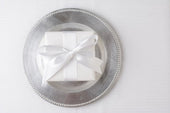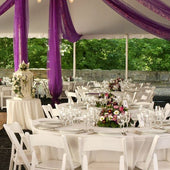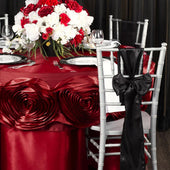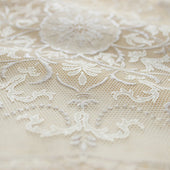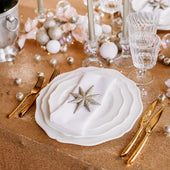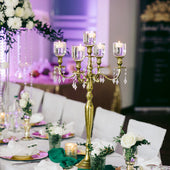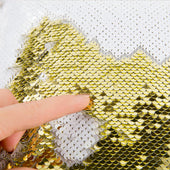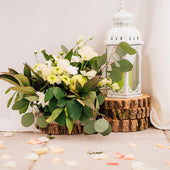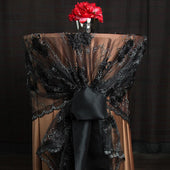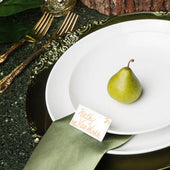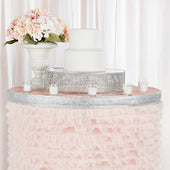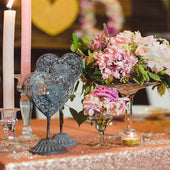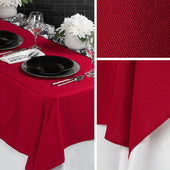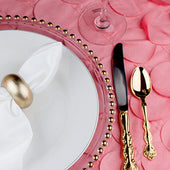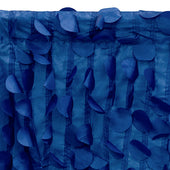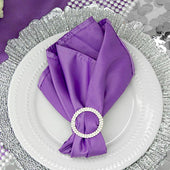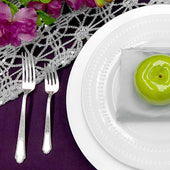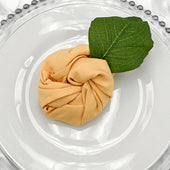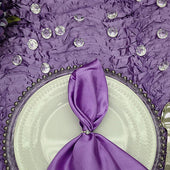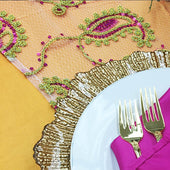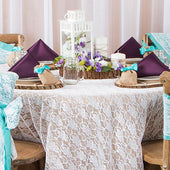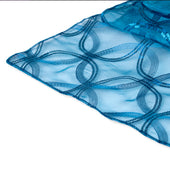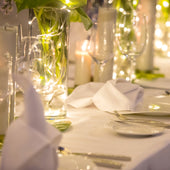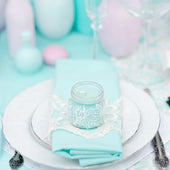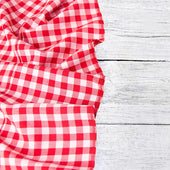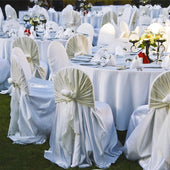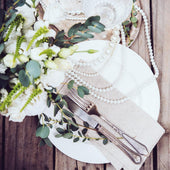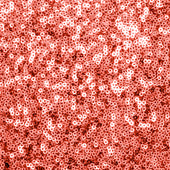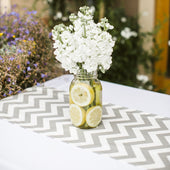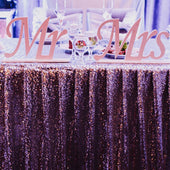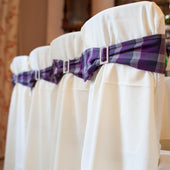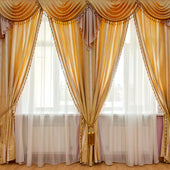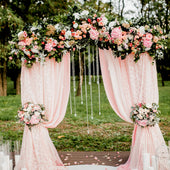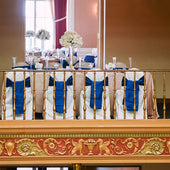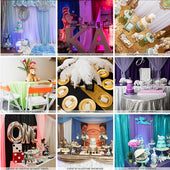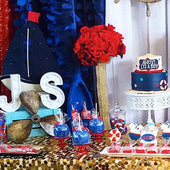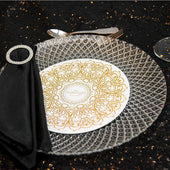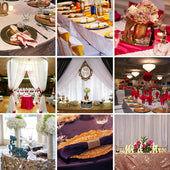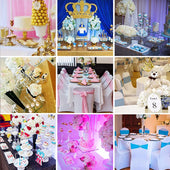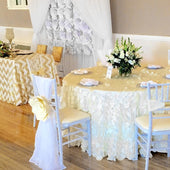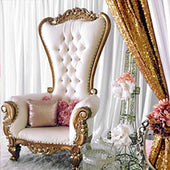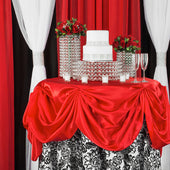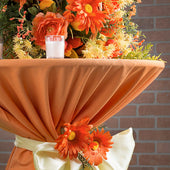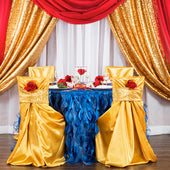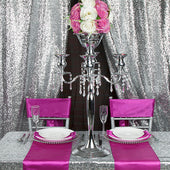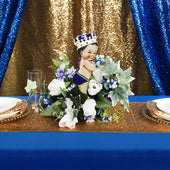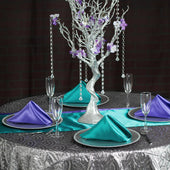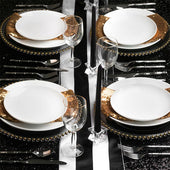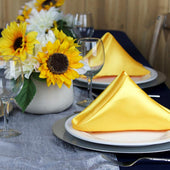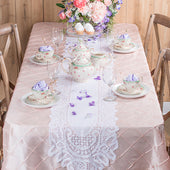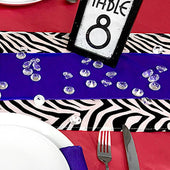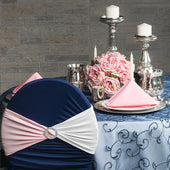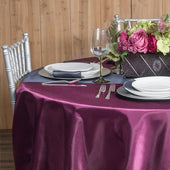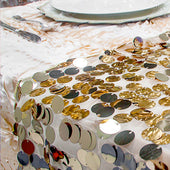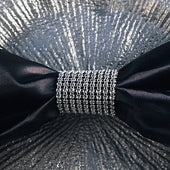Tablecloths are an essential part of event decor, which contributes a lot to the overall style of any dining setup. The flexibility of tablecloths makes them suitable for a wide variety of design themes. To truly showcase the decadence of your tablecloths, it’s important to make sure they are wrinkle-free and in good condition.
Steaming tablecloths not only removes wrinkles but can also keep your linens fresh and last a long time. This guide will go over how to steam tablecloths, to ensure your tablecloths are pristine for your next event.
Steam Guide for Linen Fabrics
When steaming tablecloths, consider the material to ensure the best results. Here’s our quick guide on how to steam tablecloths for weddings, dinner parties, and other occasions:
Linen
Steam linen tablecloths while still slightly damp to achieve the best result. Using a handheld steamer on a medium setting, moving it across the fabric in smooth and even strokes is the best way to steam linens.
Make sure to fold your linen tablecloths neatly. Place them in a storage space where they can hang nicely. This is how to keep tablecloth creases out after steaming and ready for use.
Lace
Lace is a very delicate material that requires extra care when steaming. Too much heat can compromise the quality and patterns of this fabric which is why using it with a steamer should be done carefully.
To steam a tablecloth of this material you need to use a low-heat setting and avoid any direct contact with the lace to prevent damage. A quick pass should help maintain the cloth’s freshness.
Polyester
Polyester tablecloths are generally easy to work with when steaming. This is one of the reasons why it is one of the most commonly used materials and learning how to steam polyester tablecloths for parties and other events is crucial.
To steam a polyester table linen, use a handheld steamer on a medium setting and go over the fabric in gentle sweeping motions. Repeat until you have covered the entire sheet.
Satin
Just like lace, satin also has delicate properties that may react in a bad way when heated too much. You should steam luxury materials like satin on a low-heat setting. It is also important to note that you should use a handheld steamer to avoid any damage.
Keep the steamer nozzle at a safe distance from the material to prevent overheating that causes damage to the fabric. This simple guide shows us how to steam satin tablecloths to make them last long.
What Steaming Tool to Use?
The first step in ensuring proper care for your linen napkins is to make sure that they are clean. Before you fold and store them, clean your napkins by putting them through a thorough cleanse in the washing machine. Remember to air dry your napkins to avoid any mildew or mold growth when storing.
Once your napkins are completely dry it’s to go over folding linen napkins and storage maintenance.
Iron
Using a traditional iron for steaming tablecloths is a common approach. Irons provide high heat and steam, which are effective in removing wrinkles from fabrics. It also provides precise control over the steaming process, making it easier to reach specific areas of your tablecloth.
The drawback of using irons though is that it requires more space when working. So you will need to lay your tablecloths on a flat surface. There is also a risk of burning and damage to your tablecloths if used incorrectly.
Handheld Steamer
Handheld steamers are compact and portable devices specifically designed for steaming fabrics. Handheld steamers are easy to use and require minimal setup, making them a popular choice for steaming tablecloths.
The disadvantage of using handheld steamers is that they may not be as effective at removing deep wrinkles in the same way as irons.
Ultimately, the choice between using an iron or a handheld steamer comes down to your needs and preferences. If you’re running short on time, you can also opt to use a handheld steamer.
However, if you value precise control and wish to remove deep creases the iron is an enduring choice. Whichever tool you choose, following proper steaming techniques will help you achieve a smooth, wrinkle-free tablecloth.
Proper Maintenance and Storage
steaming is just the first step in taking care of your tablecloths. Once you have properly steamed your tablecloths the next step in guaranteeing they last you a long time is proper maintenance and storage. Folding the tablecloths properly keeps them wrinkle-free when you store them.
This guide on steaming tablecloths offers general tips that can also apply to a variety of linens made of the same material. Whether it’s satin napkins or lace table overlays, exercising proper care on all your linens is a great way to keep them spotless and ready for your next special occasion.
Our Products
Satin Tablecloth
Polyester Tablecloths
Lace




